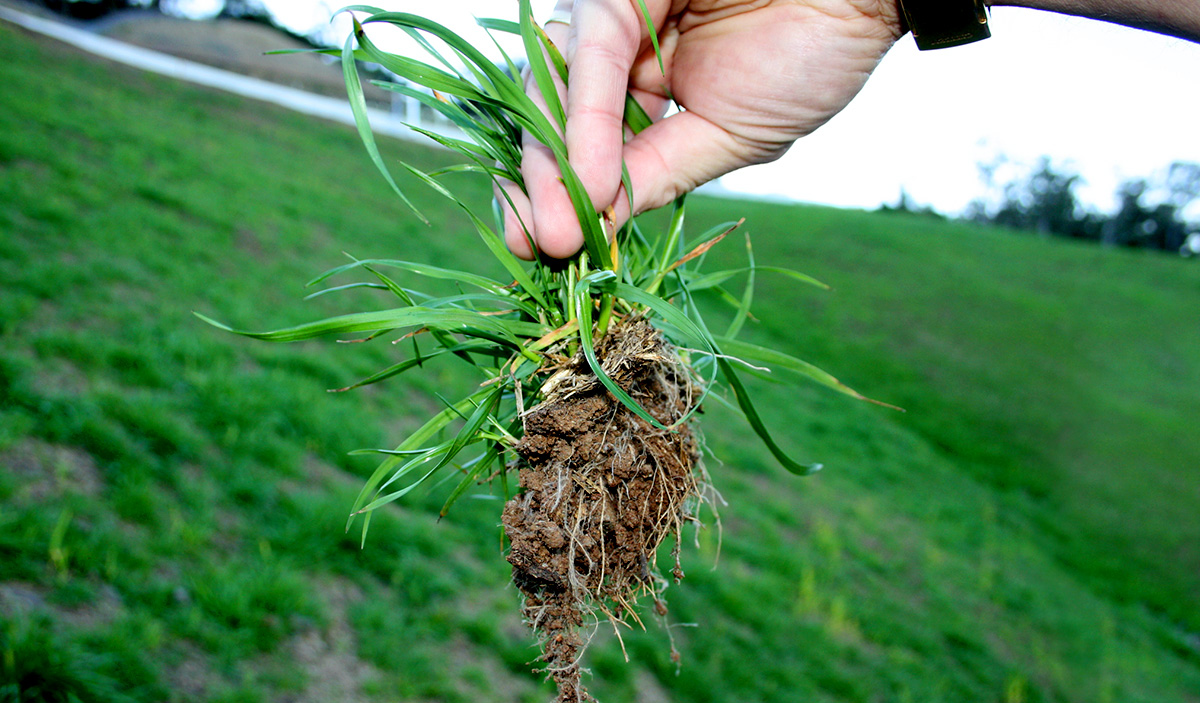The majority of revegetation projects involve highly disturbed, unbalanced, nutrient- or carbon-deficient soils.
While it’s possible to achieve growth in these soils with typical agronomy processes, better, more cost-effective long-term outcomes generally require a more natural approach – one that kick starts the process of nature.
Harnessing the natural symbiosis between the soil microbiome and plants, insects and other animals is key to success.
The way things have always been done
Revegetation projects typically involve stockpiling topsoil from a construction site, and reapplying and revegetating it post-project – a process that disturbs the microbiome and negatively impacts soil health and balance.
This approach often requires amelioration to fix pH and other soil imbalances, typically using high rates of lime, gypsum and soluble fertiliser – a process that usually takes 6 to 12 weeks to achieve balance, depending on rainfall.
However, the final seed crop is typically planted within days of applying the soil conditioners, significantly reducing the likelihood of successful growth.
Following typical agronomy “rules” in revegetation may set projects up for failure.
The revegetation revolution
The alternative, modern soil science, has been developed in the lab and tested in the field, simplifying the revegetation process and allowing native plant species to establish and grow within months rather than years – essentially restarting the process of nature.
This process involves three stages.
Stage one: soil science
To harness the processes of nature, we need to start in the soil using a new science – a science that conditions the soil to encourage microbial establishment.
We can then reinoculate the soil with a diverse range of bacteria and fungi as well as food sources like minerals, phytonutrients, biostimulants and trace elements – inputs designed to survive and thrive in damaged construction site soils.
By reinoculating soil with a purpose-designed suite of beneficial bacteria and mychorizae fungi and the correct food sources for them to survive and thrive post-conditioning, we can kick start natural processes and prompt regeneration in the soil with relative ease.
Working with soil in this way eliminates the need for large volumes of soil conditioners like lime, gypsum or low-grade organic inputs like compost, letting the soil biology do the heavy lifting of balancing the soil.
Stage two: plant establishment
The soil microbiome needs plants to survive, as the plants provide carbon sugars to the soil microbes through the process of photosynthesis, and the two then work together to rapidly rebuild soil health and balance.
In this way, plants and microbes establish a symbiotic relationship as nature intended, to achieve ground coverage, minimise erosion and provide food for animals and humans alike.
For the best results, the plant species selected must be well suited to the soil type and climatic conditions on the project site.
Stage three: sowing
There are many methods of sowing grasses or planting trees. At EnviroStraw, we specialise in hydraulic revegetation practises hydromulch.
Our hydromulch range – including our industry-leading all-in-one-bag solutions, EnviroMatrix ECM and BFM Complete – is designed for easy application and native plant-ready. To revegetate and restore even the steepest slopes and most degraded soils, simply add seeds to the tank of the application machinery and spray.
Do you want to restart the process of nature and achieve better long-term revegetation outcomes on site? Give our soil scientists a call on 1300 868 669.
